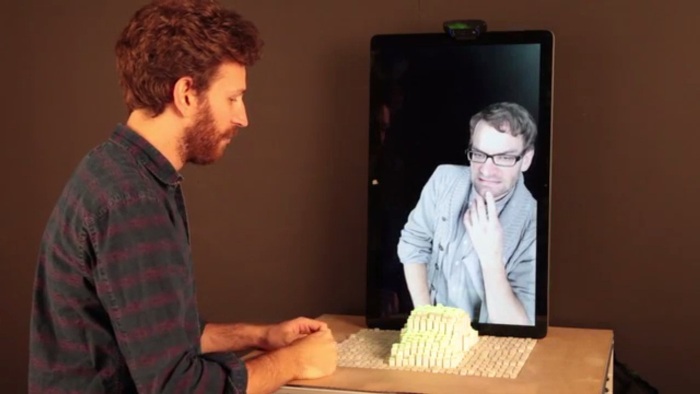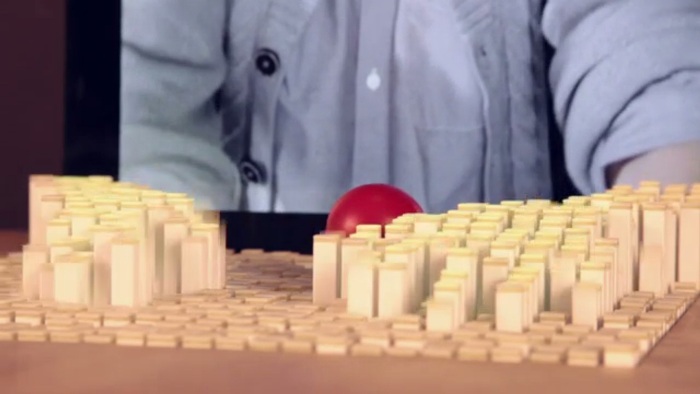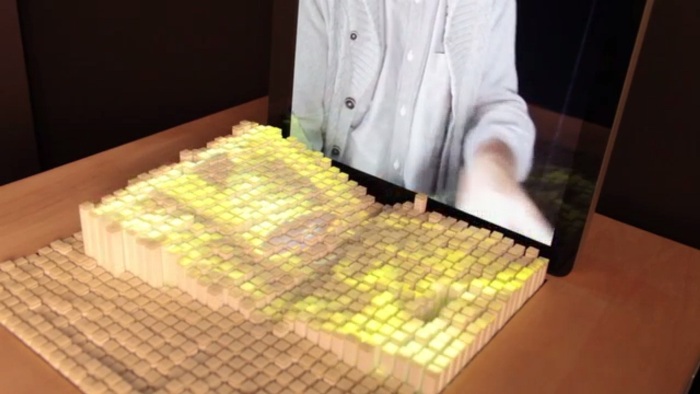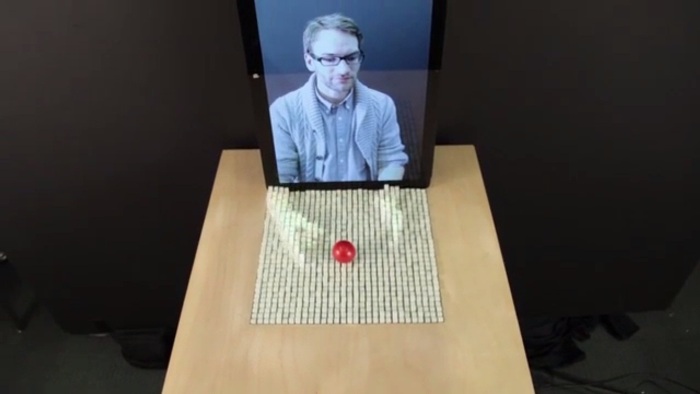Beyond Touch: MIT’s New Display Tech Has Shapeshifting Abilities
Sending scents as part of a message is a relatively new technology. Through messages called oNotes created using an oSnap app and decoded by oPhones, it can be possible to share what your sense of smell is allowing you to experience to someone on the other side of the world. However, did you know that even before this, a technology to enable the “sending of touch” was already developed? Yes, there was a technology introduced not so long ago to allow two people in a long distance communication setup to virtually touch each other or interact with objects in a remote location to some extent. The technology is a shapeshifting display tech that enables parties in a conversation to “touch” each other for a “more intimate” way of electronic communication.
inFORM Dynamic Shape Display
Around a year ago, MIT Media Lab’s Tangible Media Group developed inFORM, a dynamic shape display tech capable of rendering 3D imagery into physical objects. It’s more than just a hologram. It renders images into palpable objects your sense of touch can perceive.
inFORM was born out of the idea among MIT Tangible Media Group’s scientists that the future of computing is tactile. This is in particular reference to computer interfaces. At present, we are already enjoying the conveniences of capacitive touchscreen displays. With MIT’s inFORM, we will not only be touching displays, we can possibly “extend” our touch to another location through an interface that shapeshifts to represent our presence.
inFORM is a surface that is capable of three-dimensional form or shape changing. With it, people can do semi-actual/semi-virtual handshakes. The display’s shapeshifting component can transform into a hand to complete a handshake. It can also interact with other physical objects placed on top of it.
Shapeshifting or Just a Pinscreen?
After seeing the promotional video of the inFORM tech, you would probably be one of those who would be somewhat disappointed. It’s not really the kind of shape-shifting you probably have in mind. No, the display does not behave like fluid that changes into a new form. Bluntly put, inFORM is like a glorified pinscreen with a low resolution.
inFORM is not really the kind of 3D display you would expect. However, it can be aptly called a display as it is indeed capable of projecting visual information. Also, it comes with a projector that helps provide context on the changes happening on the screen. In the video demonstration, the person on the other side of of the screen is seen moving a ball and other objects put on top of the inFORM display pins. The pins also light up to produce visuals that define the forms or shapes being exhibited.
Yes, inFORM is like a pinscreen but it certainly is more than just a pinscreen. It is like a self-aware computer monitor capable of showing tangible objects or shapes. It can be used to produce an interactive 3D representation of a terrain. It can also generate 3D models that can be tweaked or significantly modified with your real hands or by the hands of someone in another location.
Inspiration Behind the Tech
The MIT scientists responsible for creating inFORM opine that human interaction should involve tactile feedback, that interacting with touch displays is not the way humans are designed to have interactions. They believe that touch displays seem to limit the human sense of touch and takes away the essence of human interaction. That’s why they want to create something that can pave the way for interfaces that invoke the human sense of touch. They want to create interfaces that allow humans to feel a variety of shapes, molds, forms, and textures instead of getting accustomed to the cold flat surfaces of touch displays that make the fingers feel nothing but a smooth glass surface with visual representations behind it.
Applications
For now, MIT scientists are still in the process of finding practical applications for this technology. However, it’s easy to think of gaming as one of the sectors that will likely benefit from it. Games can be made more interactive with the incorporation of a system that puts the sense of touch to prominent use. Professionals and hobbyists who are into creating models can also take advantage of this technology. Likewise, the military can benefit from inFORM’s ability to generate 3D terrain representations, especially with the use of finer pins (to show finer details and a bigger imagery).
It can be said that now, it is already possible to share content that can be perceived by the senses of sight (photos and videos), hearing (audio), touch (inFORM), and smell (scent messages). It may not be that long before something is invented to make it possible to send “tastes” as attachments to electronic messages.




